The Habu Snakes of Okinawa
Beneath the towering trees of Yambaru, a silent world stirs. Join me as I journey into Okinawa’s wild north, tracking venomous legends and chasing a once-in-a-lifetime encounter with the mysterious Silver Habu.
The Habu Snakes of Okinawa
Winding my way through the dense jungles of Yambaru in northern Okinawa, I find myself drawn to the mystery and allure of one of the island's most iconic predators: the Habu Snakes of Okinawa. With my camera gear strapped securely to my back and the soft hum of cicadas in the background, each step forward brings the promise of an encounter. In these lush forests, three species command particular attention—the formidable Okinawa Habu (Protobothrops flavoviridis), the elusive Hime Habu (Ovophis okinavensis), and the unwelcome visitor, the Taiwan Habu (Protobothrops mucrosquamatus). For wildlife photographers like myself, documenting these serpents in their natural habitat is a test of both patience and respect for the wild.
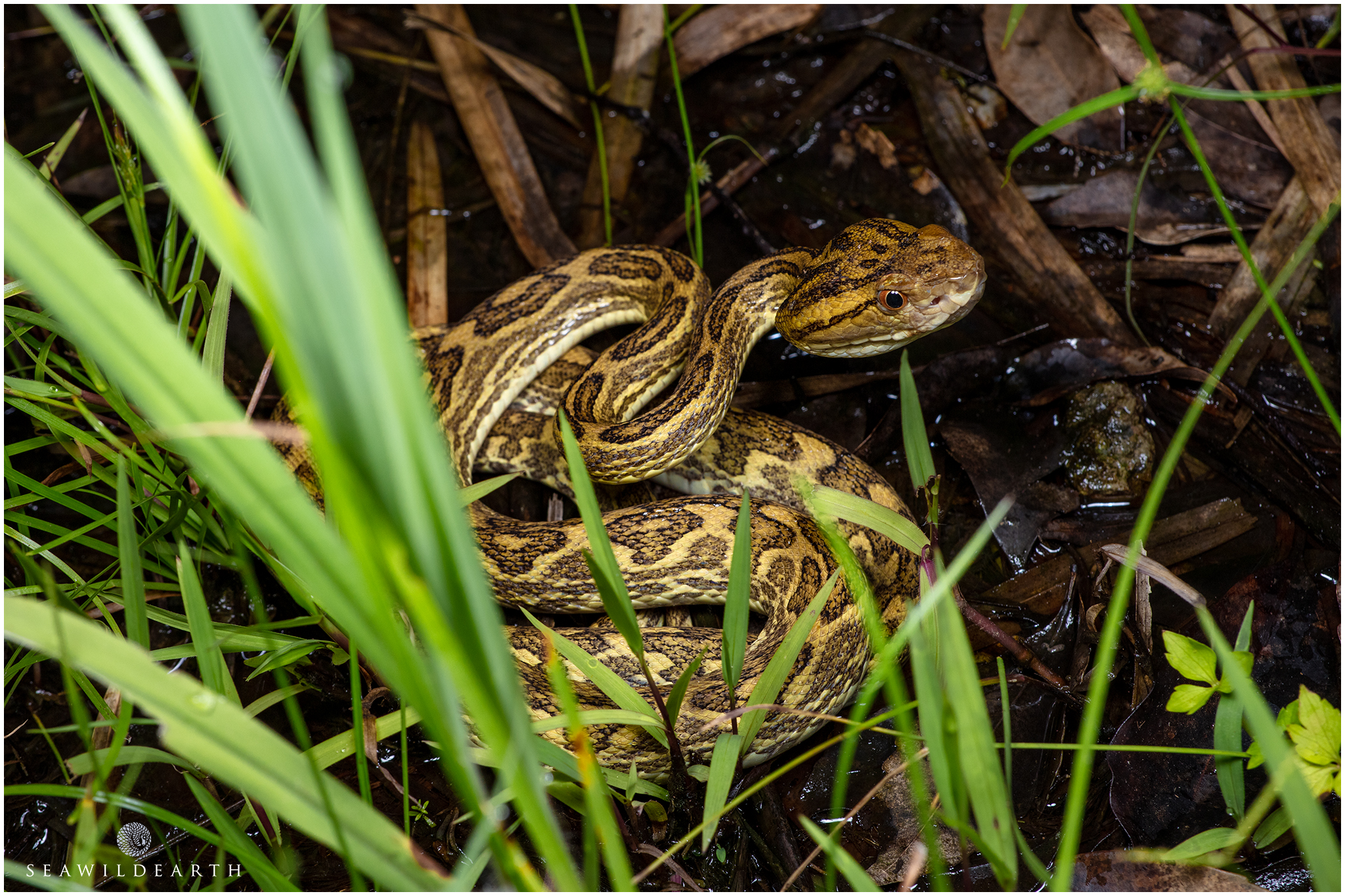
The infamous Okinawa Habu, without a doubt the king of the jungles in Okinawa. Persecuted and hunted, encounters with this majestic species are becoming less and less.
The Okinawa Habu, above, is undoubtedly the monarch of these jungles. Growing to an impressive length of up to two meters, this snake’s potent venom and striking coloration make it a revered subject for those venturing into the undergrowth. Unlike many venomous species elsewhere, the Habu Snakes of Okinawa are often encountered basking along paths or coiled in low branches, their camouflage a marvel against the dappled light. Their reputation, while fearsome, is one that demands understanding rather than fear—a perspective I have come to appreciate after countless nights scanning the foliage for a glint of scale or the subtle flicker of a tongue.
The Okinawa Habu is without a doubt the master of the jungles in Okinawa. Reaching a length of up to 2meters it is a force to be reckoned with.

The Hime Habu attains a length of around 80cm and can be a very squat and robust snake, often found in damp areas where Kajika Frogs congregate.
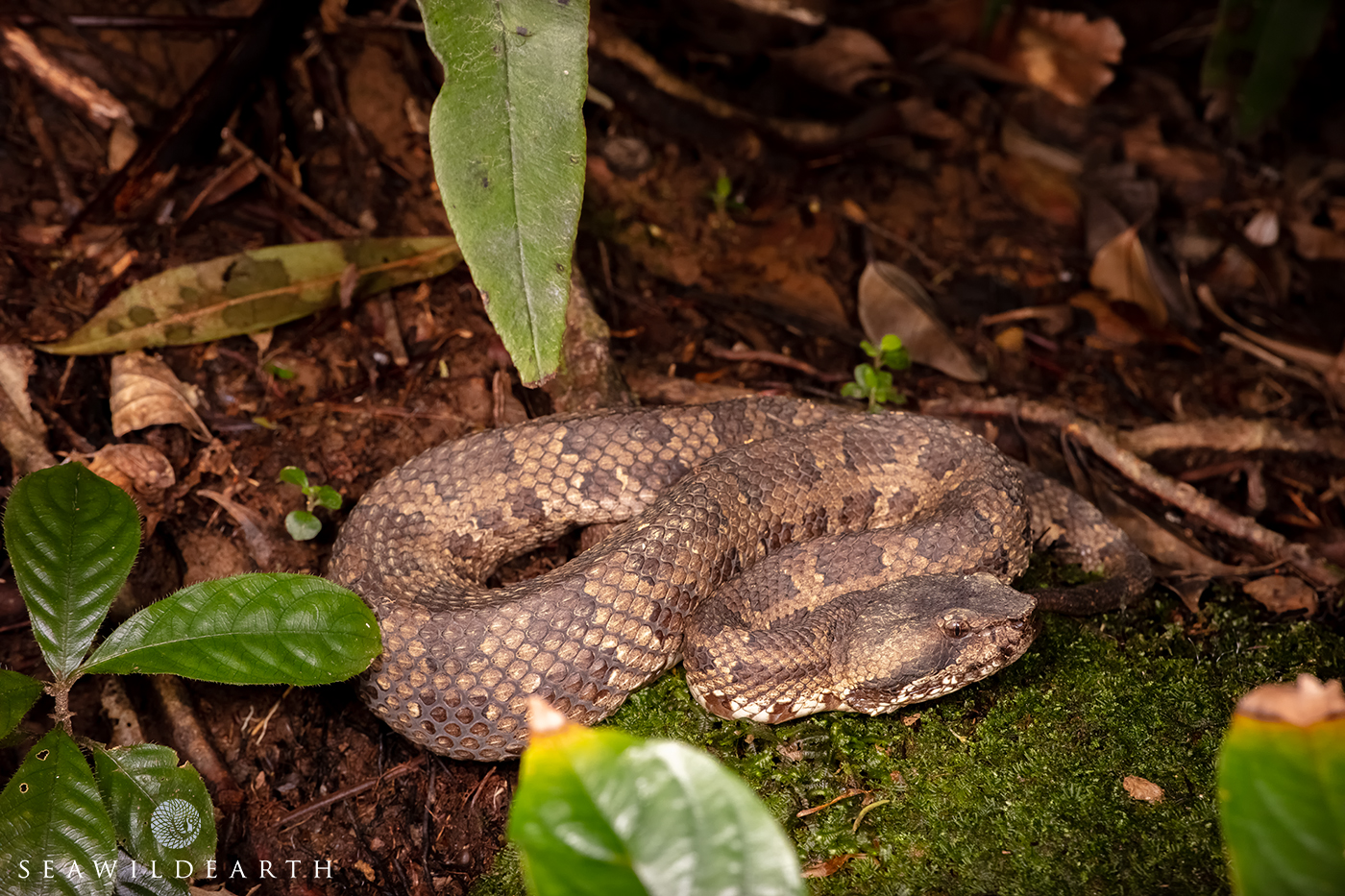
The Taiwan Habu tends to be the slimmer of the three Habu species. I encounter this species much more within the southern farmland areas of Okinawa.
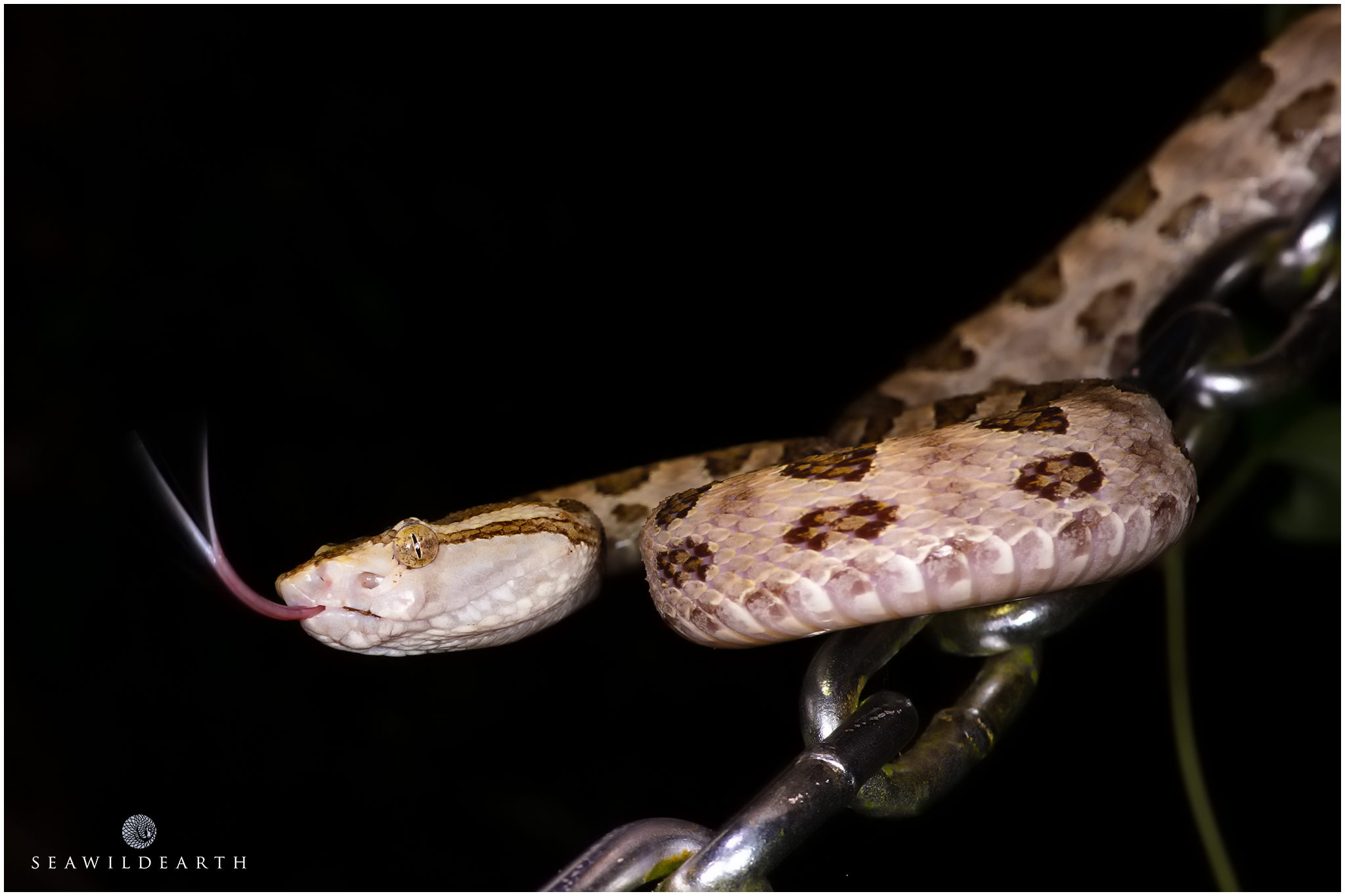
Alongside the Okinawa Habu, the Hime Habu weaves a different narrative through Yambaru's shadowy corridors. Smaller and less immediately imposing, the Hime Habu is no less fascinating. Unfortunately, from my standpoint of a wildlife photographer, it has become the focus of a concerted eradication effort. Originally more restricted in range, this species has adapted too well to Okinawa’s environments, particularly in the absence of its traditional predators. Conservationists worry that the Hime Habu, through unchecked predation on native frogs and lizards, is threatening the fragile ecological balance of the northern forests.
In an ill-fated attempt to control the population of the Habu Snakes of Okinawa, mongooses were introduced to the island during the early 20th century. On paper, it must have seemed a simple solution: a predator to match the venomous threat. Yet nature, as always, refused to bend to human assumptions. Habu are primarily nocturnal, stalking through the forests under the cover of darkness, while the mongoose is diurnal, active only during the day. Their paths rarely crossed. Instead of curbing Habu numbers, the mongoose turned its attention to the vulnerable native wildlife, wreaking havoc on species that had no evolved defenses against such a swift and agile predator. One of the most tragic victims has been the Okinawa Rail, an endemic, flightless bird now teetering on the brink of survival in part due to mongoose predation. The introduction of the mongoose remains a cautionary tale—a stark reminder that when meddling with delicate ecosystems, the consequences often reach far beyond our intentions.
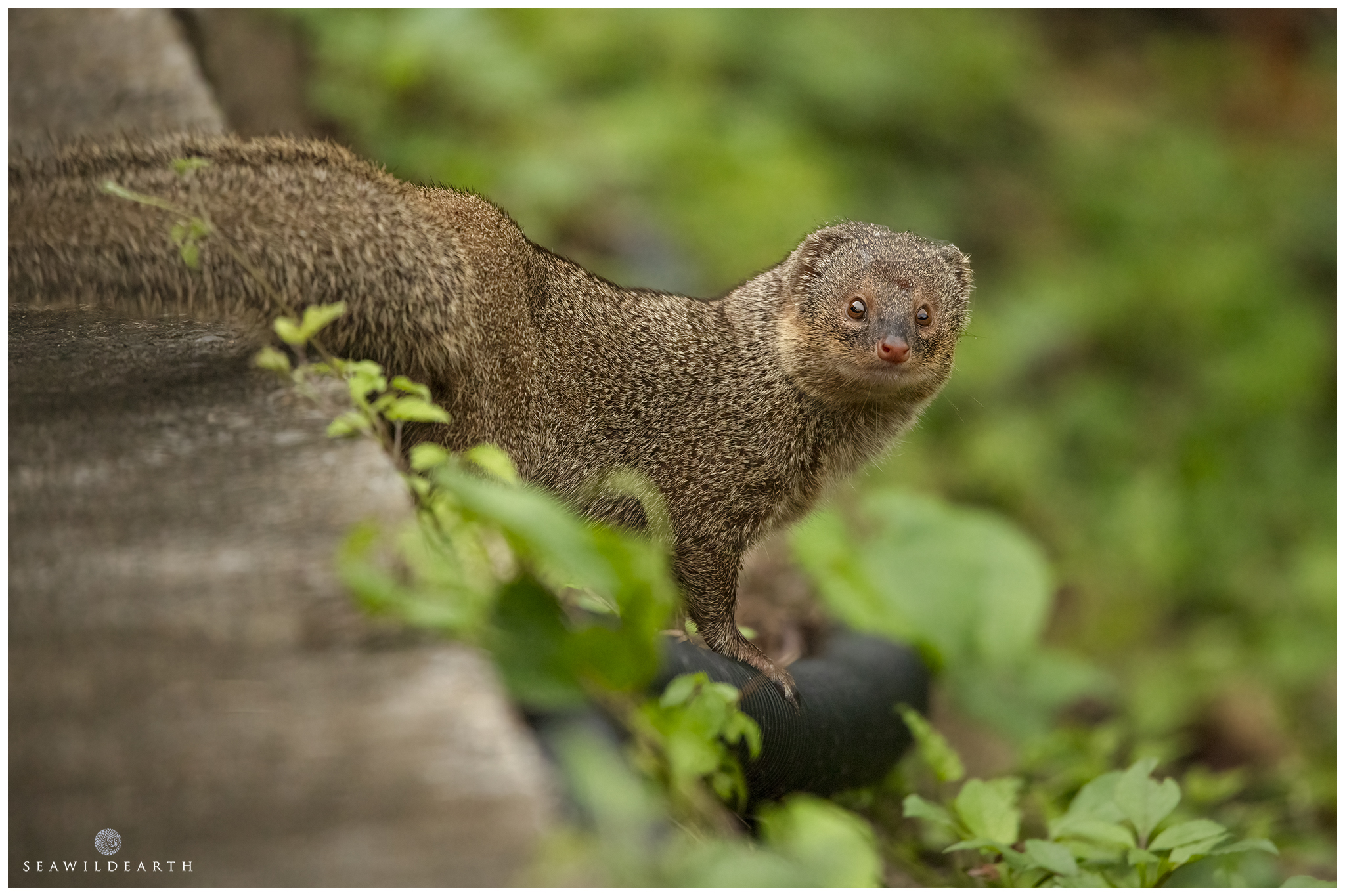
Mongoose were introduced to control the numbers of Habu in Okinawa but, like ships passing in the night, neither of the species came into contact with each other given their sleeping activity.
Not all serpents of these jungles are natives, however. The Taiwan Habu, likely introduced accidentally during cargo shipping decades ago, now presents another challenge to Okinawa’s endemic wildlife. This invasive species competes directly with the Okinawa Habu, both for territory and prey. Though slightly smaller on average, the Taiwan Habu adapts rapidly and has been steadily expanding its range. Encounters with this interloper have become increasingly common on my nighttime treks, and their presence further underscores the precarious state of balance here. Spotting a Taiwan Habu offers a bittersweet moment—an incredible photographic subject, yet a stark reminder of human-induced changes rippling through the ecosystem.
I couldn't quite figure out what I was looking at when I first encountered it. An Okinawa Habu devoid of yellow pigmentation? And then, I saw its eyes.
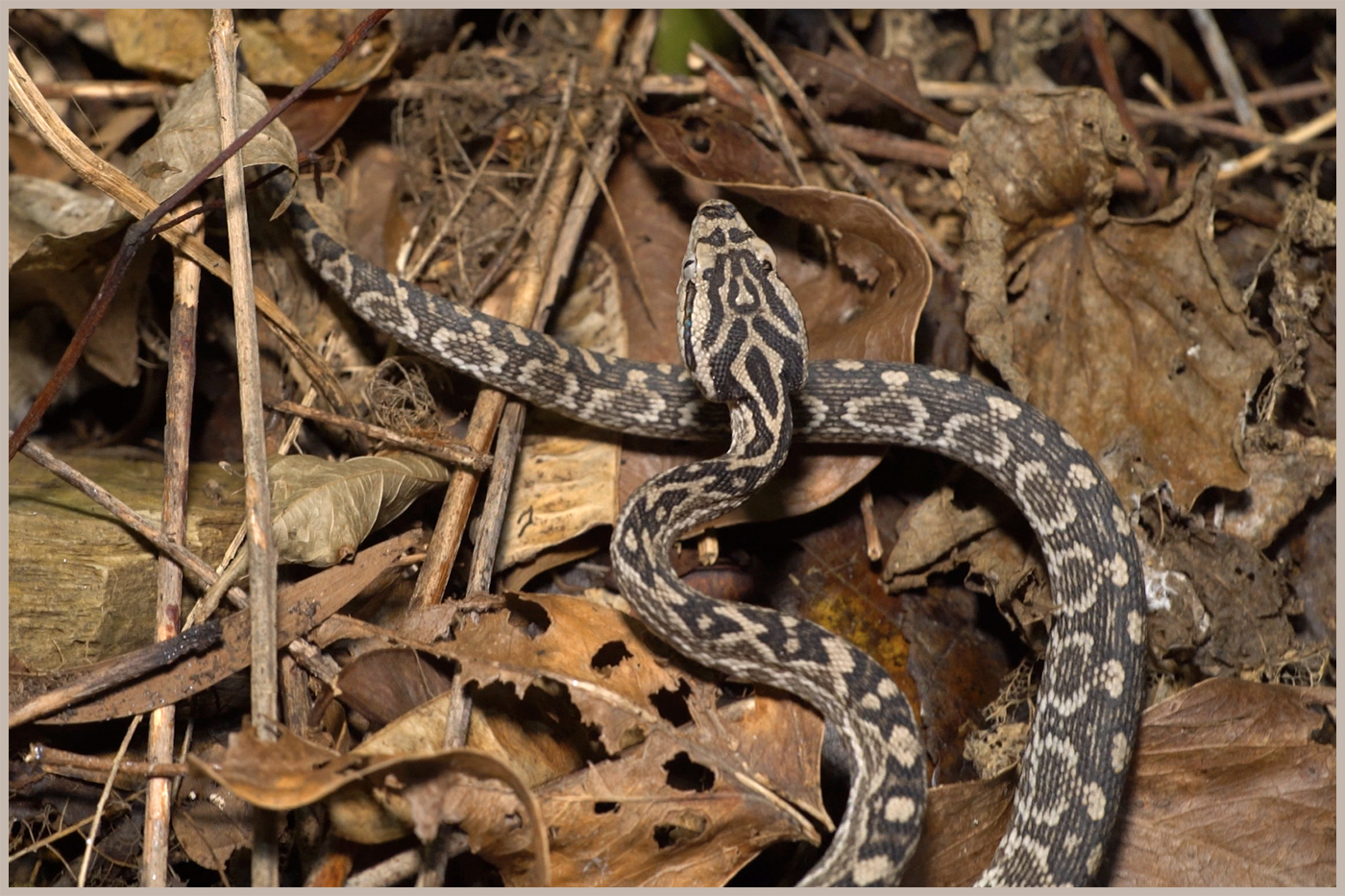
With eyes as white as snow and the silver sheen of its scales there was no mistaking. A species whose name is often whispered rather than spoken.
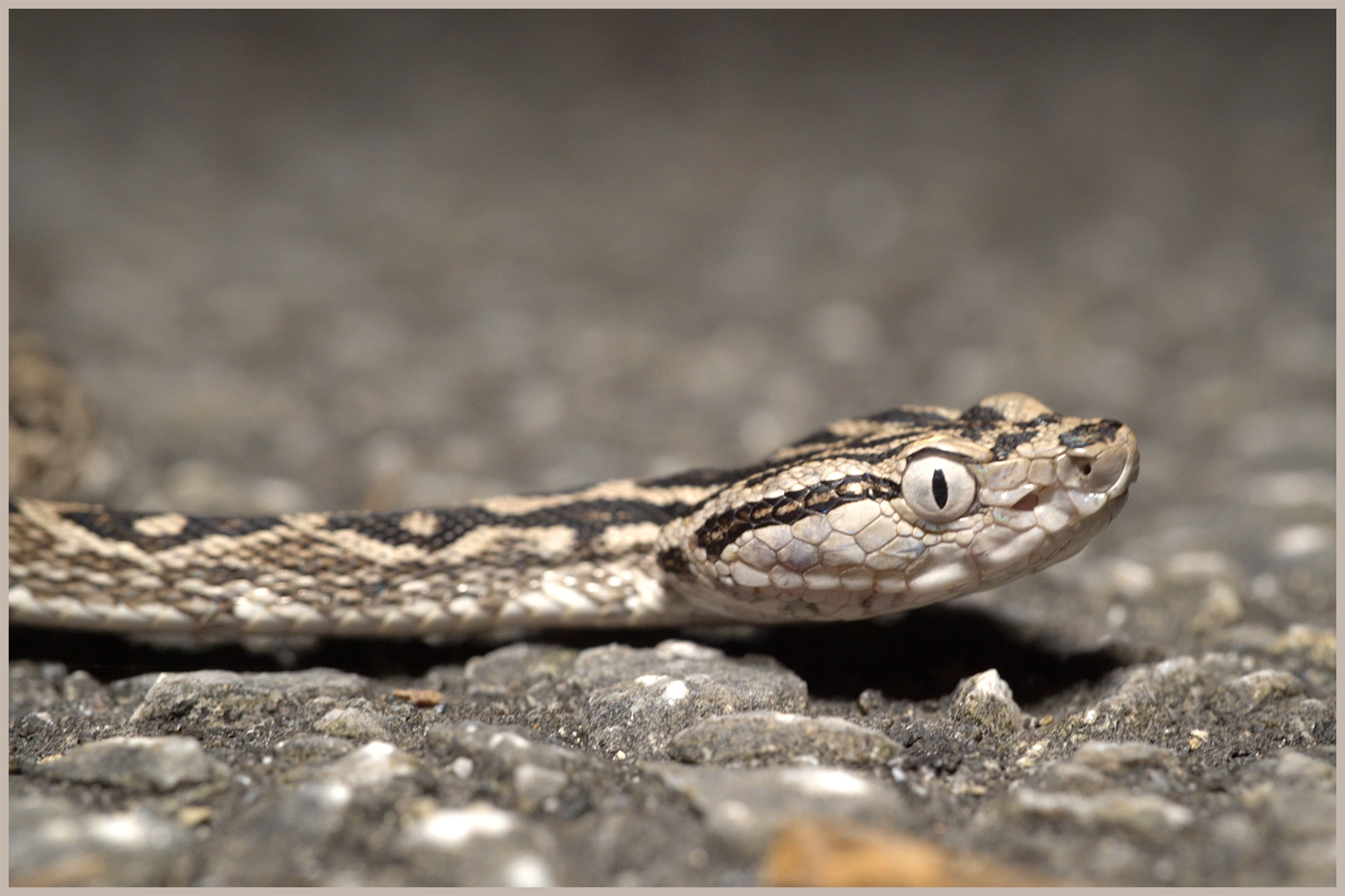
Very few encounters with this particular snake on record. From what I can find, my encounter led to the first filmed documentation of the species.
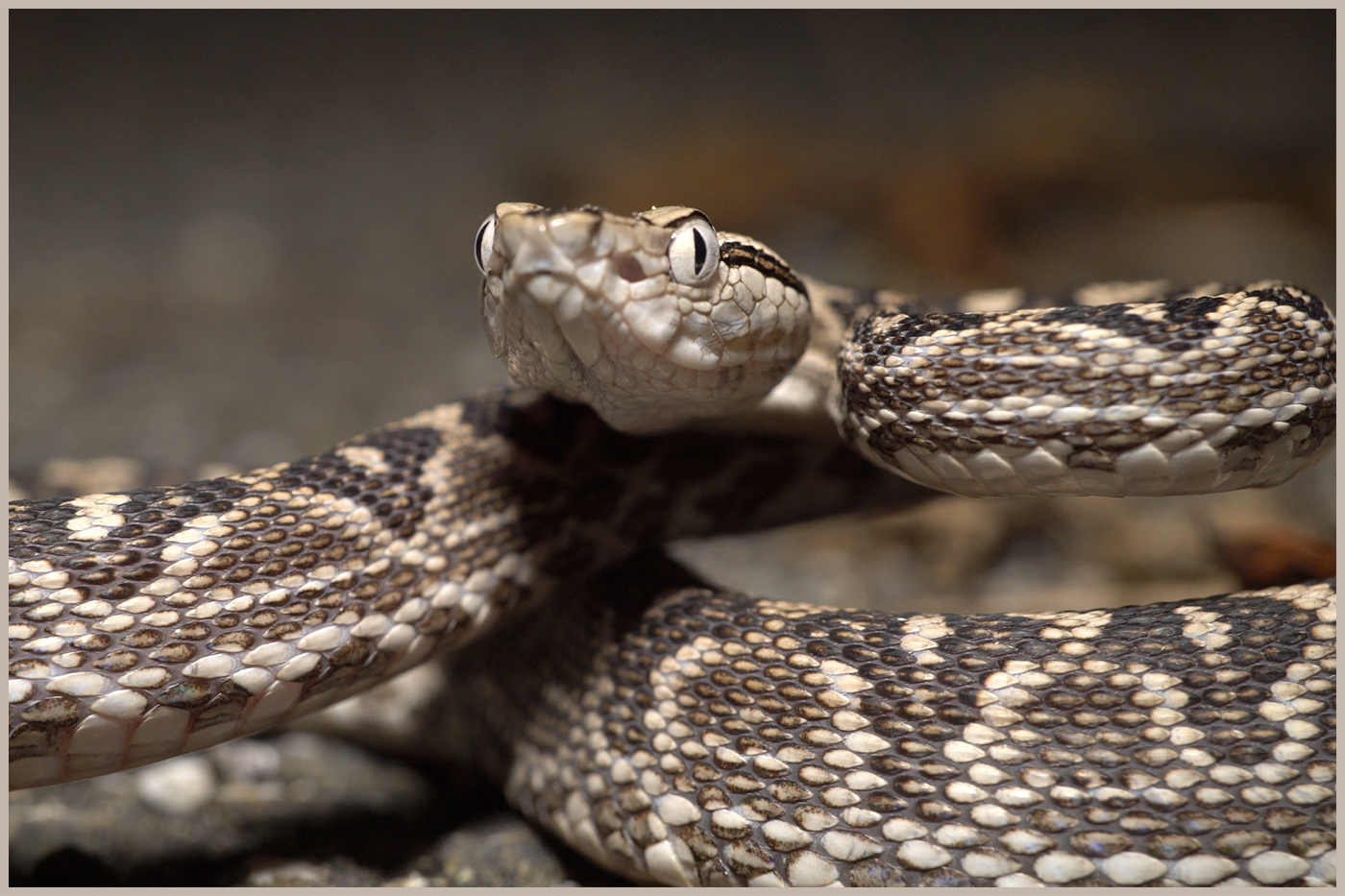
Of course, the jungles of Yambaru are always full of surprises. On one unforgettable night, deep within the mist-laden heart of the forest, I encountered what can only be described as a once-in-a-lifetime marvel—the elusive Silver Habu. A variant of the Okinawa Habu, this individual lacked the usual yellow pigmentation entirely, its scales shimmering under my light with an otherworldly, silvery sheen. Most striking of all were its eyes: completely white, devoid of the typical golden irises, giving the snake an ethereal appearance. Previous encounters by others had yielded only blurred photographs; the unexpectedness of the moment often left observers unprepared. But that night, I managed to capture the very first film footage of the Silver Habu in the wild—a moment that stands as one of the proudest of my career documenting the Habu Snakes of Okinawa.
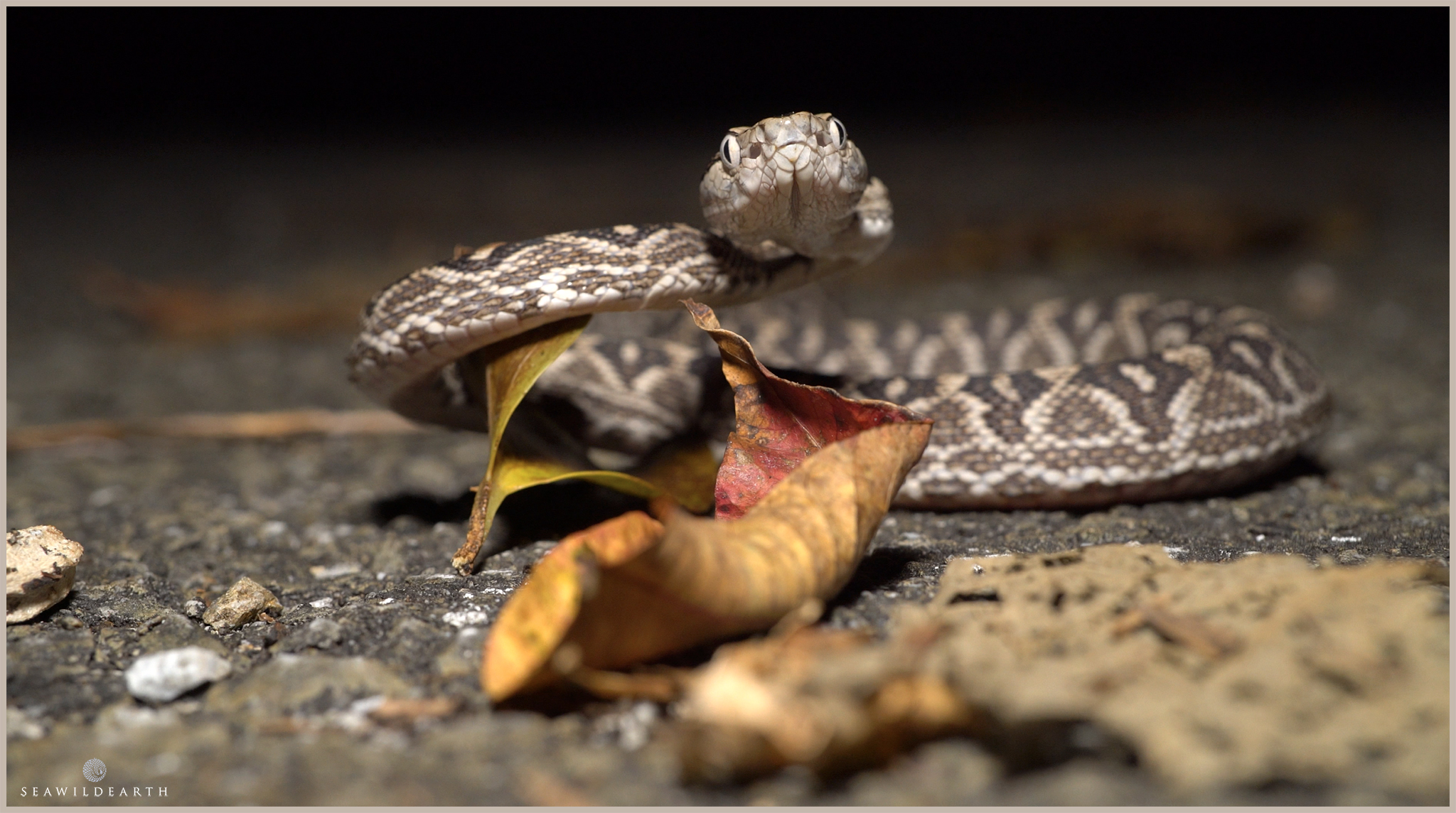
A video still from my Sony A7S2 filmed in 4K 30P of this illusive and stunning creature, the Silver Habu.
If you are interested in joining me to seek out these beautiful snakes as well as all manner of additional wildlife species found within the northern forests of Okinawa then simply reach out and contact me via the contact form here.
About the Author
Internationally recognized as a provider of quality mixed media Mark Thorpe is always on the search for captivating imagery.

Photographer / Cameraman
Mark Thorpe
Emmy Award Winning wildlife cameraman and Internationally published landscape photographer Mark Thorpe has been an adventurer since he could walk! Spending 17yrs as an Underwater Cameraman at the start of his imaging career the highlight of which was being contracted to work with National Geographic. In that role as a field producer and predominantly underwater cameraman he's been privy to a mixed bag of hair raising adventures. For some reason he was always selected for projects relating to large toothed marine predators such as Great White and Tiger Sharks, Sperm Whales, and Fur Seals. Additionally he has also been active within Southern Africa on terrestrial projects dealing with a wide array of iconic wildlife.
Currently based in Okinawa, Japan, he has established himself there as the leading ocean, wildlife and landscape photographer. Always on the lookout for that next big adventure he has travelled extensively throughout the islands of Okinawa to document their beauty and natural history. He shares his exploits online with a totally organic social audience. Videography wise he continues to create short form content to promote the diversity of wildlife within the Okinawa prefecture.
Mark also plans, offers and guides completely bespoke wildlife experiences for private sector clientele. Whether you're a photographer looking to document the behavior of a specific species or indeed a nature loving couple/individual looking to that totally immersive and all encompassing experience. From single multiple hour options through to multiple day experiences trips and experiences are created with the view to witnessing the truly wild spectacle that Okinawa offers without being treated, or seen, as just another visitor to the island. Should you wish to experience this truly awesome side of wild Okinawa then all you have to do to get the ball rolling is click on the Contact page and fire off any questions you may have about the currently available adventures.
